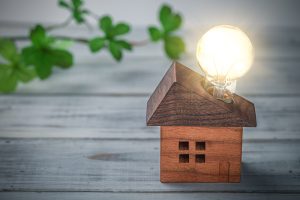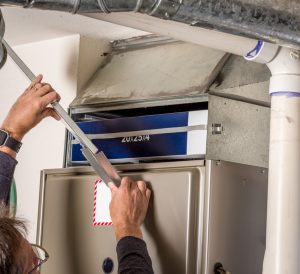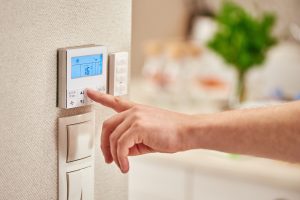Mold is a common problem in many homes. It can cause serious health problems, from allergies to asthma and even more severe respiratory conditions. But if you find mold growing in your home, what should you do? In this blog post, we’ll discuss some tips for dealing with mold at home.
Identify the Source of the Mold
The first step is to identify where the mold is coming from. Is it coming from a damp basement or a leaky pipe? Knowing the source of the mold will help you to determine how to deal with it and how to best address the issue. If the source of the mold is something like a leaking pipe, then you can easily fix it and prevent further growth. However, if it’s coming from damp walls or flooring, then more drastic measures may be necessary.
Clean Up the Area Immediately
Once you’ve identified the source, clean it up as soon as possible. This may involve removing and replacing the affected area, as well as cleaning with an antifungal cleaner. Be sure to wear protective gear when you’re cleaning up the mold and keep windows open in order to ventilate the area. This means removing any furniture, rugs, or other objects that may be in the area. Use a damp cloth and a solution of equal parts bleach and water to scrub down the affected area. Make sure you wear protective coverings such as gloves and face masks when cleaning up mold. Remove any wet or damp materials and thoroughly clean the affected surfaces with the bleach solution. If the mold has spread, you may need to use special cleaning products designed for mold removal.
Contain and Remove the Mold
Once you have identified the source of the mold, then it’s time to contain and remove it. This can be done by using a HEPA vacuum cleaner to remove all spores, sealing up any porous materials that may be harboring mold, and disposing of them properly. If you’re dealing with a large area of mold, then you may want to contact a professional for help. Wear gloves and protective clothing when handling any type of mold, as breathing in its spores can be hazardous to your health. Use cleaning agents specifically designed for killing mold spores on hard surfaces; bleach-based solutions are usually effective for this purpose. Soft materials such as carpets may need to be replaced entirely if they are too badly damaged by mold growth. However, if there are more extensive issues, mold remediation done by specialists may be necessary to ensure it is all removed.
Prevent Future Growth
Finally, once all of the visible signs of mold have been removed, take steps to prevent future growth. This means keeping the affected area dry and making sure it is well-ventilated. Consider using a dehumidifier or air conditioner to keep humidity low in the home. Inspect your home regularly for signs of moisture and mildew, as these can be indicators of growing mold. If you find any suspicious areas, make sure to clean them up right away. This means addressing any underlying issues that might be causing moisture buildup in your home—such as leaky pipes or poor ventilation—and ensuring that any affected areas are thoroughly dried before being repaired or replaced. You may also want to invest in dehumidifiers or air purifiers that can reduce moisture levels in your home and make it less hospitable for future mold growth.
Repair Any Damaged Areas
Once you’ve cleaned up the area, take steps to repair any damaged areas that may have caused the mold to start growing in the first place. This could mean replacing wet or damaged drywall, flooring, or other materials. It’s also important to keep an eye on the problem area in case more mold starts growing. If it does, then you may need to repeat the steps outlined above. This could mean replacing drywall, sealing up any cracks or openings in the walls, and ensuring that windows and doors have proper insulation. You should also check for any other areas of moisture in your home that could be contributing to the problem. This could include replacing leaky pipes or sealing up any cracks in walls and ceilings that allowed moisture to get inside. If necessary, contact a qualified contractor who can help with repairs and prevention measures.
Check for Recurring Problems
If you’ve identified the source of the mold but it keeps resurfacing, then there may be a deeper issue that needs to be addressed. It could be that the affected area is not being properly ventilated or there might be a hidden source of moisture in your home. Check for any damp spots in walls, ceilings, and flooring as these can be indicators of hidden leaks or excessive humidity. If necessary, contact a professional for tips on how to reduce moisture levels in your home and prevent mold from returning. It could be something like a plumbing or drainage problem that is causing water to drain into your home or apartment building. If this is the case, then you should call a plumber or other professional to come inspect your property and help you find a solution.
If You Have Health Concerns or Suspect a Large Infestation
If you have health concerns related to exposure of mold spores or if the infestation is particularly large and pervasive, contact a professional remediation service immediately. Professional mold removal services can assess the severity of the problem and provide advice on how to safely remove the mold from your home. They can also help identify any underlying causes of the infestation, such as poor ventilation or water damage, and suggest solutions to prevent future growth. A qualified specialist will be able to assess the situation and provide advice on how to safely remove the mold from your home.
Dealing with mold can be challenging and even dangerous if not done properly. However, with these tips for identifying and removing sources of mold from your home, you can ensure that your living environment stays healthy and safe for everyone who lives there! By taking steps to contain and remove existing infestations while also preventing future occurrences through proper maintenance routines, you can keep your home free from unhealthy levels of moisture—as well as any potential health risks associated with them.



